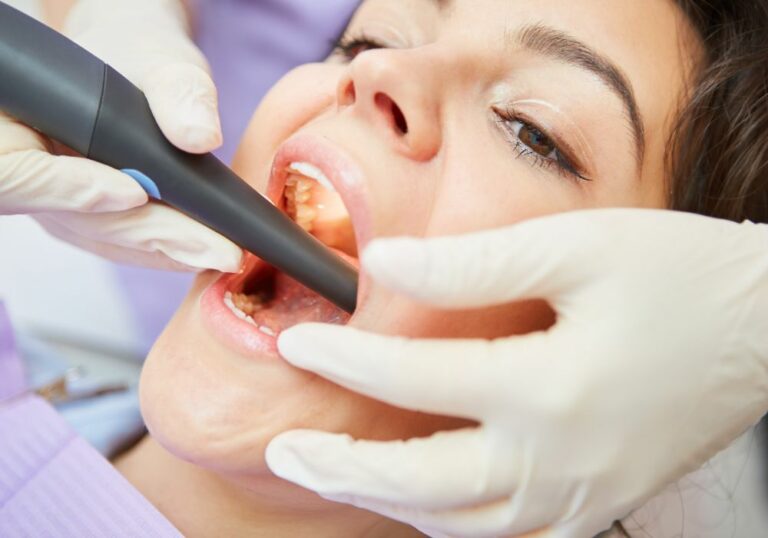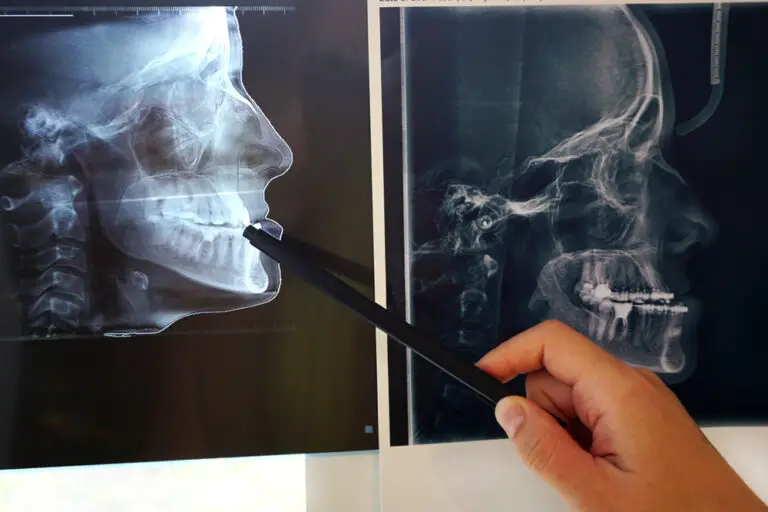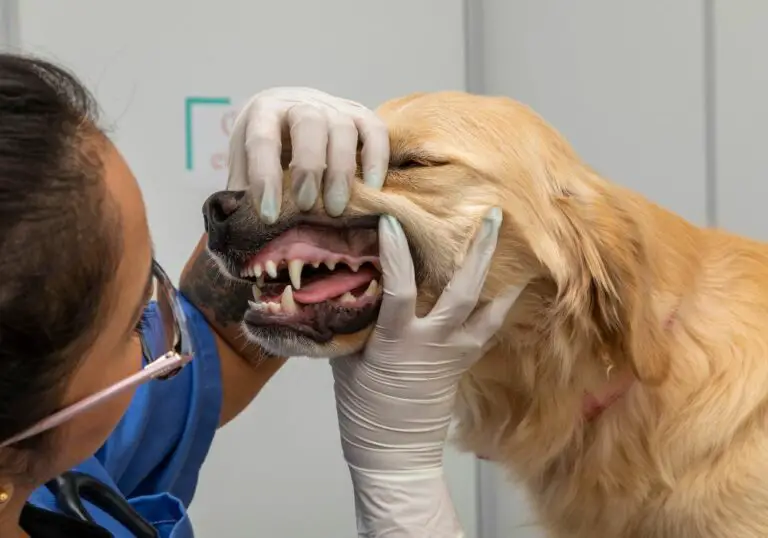Using whitening strips is a popular teeth whitening method because they are affordable and easy to use. Despite the ease of use, many people still have questions about them especially when using them for the first time such as how long after brushing my teeth can I use white strips or will there be any side-effects from using teeth whitening strips?
To get the best results from using teeth whitening strips you need to follow the instructions for the specific product you are using. In addition, there are some general rules to apply to get whiter teeth and a brighter smile with whitening strips. So continue reading to find out more.
Brushing Your Teeth Before Using Whitening Strips
You should always brush and floss your teeth before you use whitening strips. This removes plaque that has buildup on your teeth. If the plaque is not cleaned, it can prevent the whitening strips from sticking properly to your teeth. Brushing before using the strips can therefore give you better results.
When you have brushed your teeth, wait around thirty minutes before you apply the whitening strips to your teeth. If you apply the strips too soon after brushing, they can cause gum irritation.
Brushing Your Teeth After Using Whitening Strips
While it is better to brush and floss before you use the whitening strips, you can brush your teeth after the whitening treatment, too. However, do not brush straight after you have removed the strips but wait around twenty minutes before brushing or flossing. This will allow the surface of the teeth to recover from the treatment first.
Brushing your teeth following the treatment will not reduce the effect of the whitening strips nor will it harm your teeth. Be gentle and careful to avoid gum irritation. If you use whitening strips or other teeth-whitening products, consider getting an electric toothbrush that alerts you if you apply too much pressure when brushing your teeth.
Eating After Using Teeth Whitening Strips
When you use whitening strips on your teeth, it is possible to eat after you have removed them. However, your teeth may be more sensitive straight after, so avoid foods that could cause you discomfort such as hot and cold beverages, acidic foods, or spicy foods.
To get the best results avoid consuming foods and drinks that can stain your teeth after the treatment. This includes coffee, red wine, bright spices, dark berries, and fizzy drinks that have strong pigments. For longer-lasting results, it is best to avoid such food and drink items as much as possible.
How Do Teeth Whitening Strips Work?
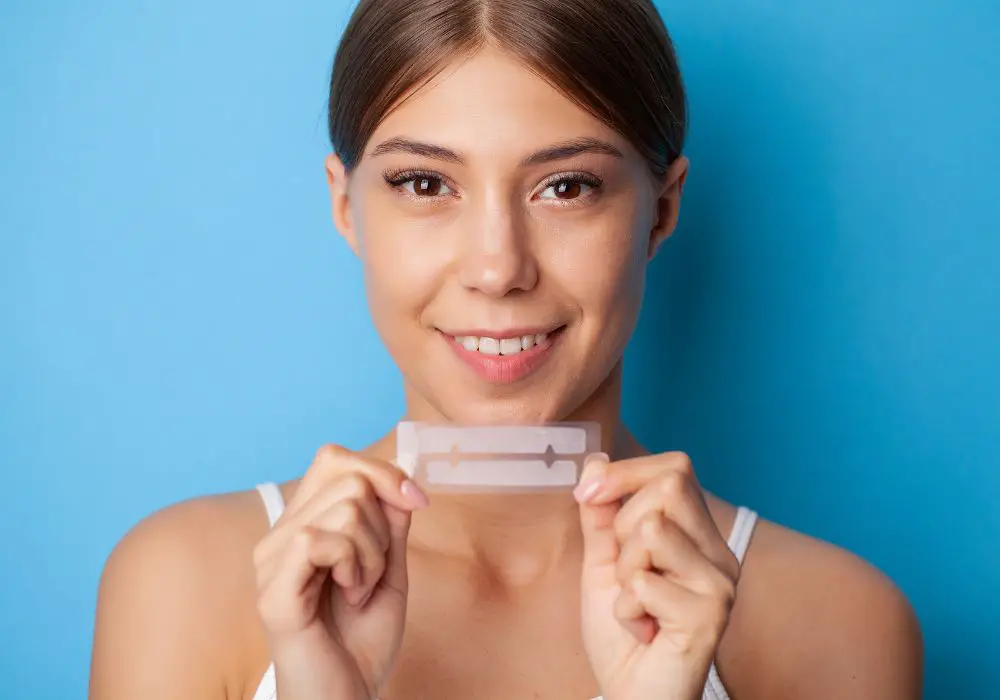
Teeth whitening strips contain bleach which removes stains and discoloration from teeth when it comes into contact with them. The most commonly used active ingredient in whitening strips is hydrogen peroxide or carbamide peroxide. However, there are options available that contain different whitening agents.
The peroxides in the strips penetrate the enamel that forms the outer layer of your teeth. When it reaches the dentin layer just beneath the enamel, it begins to bleach the chromogens, which are pigment molecules that cause staining on teeth.
What Are the Alternatives to Teeth Whitening Strips?
If you are not sure if teeth whitening strips are the right option for you, there are many other whitening methods you can consider. Some of them you can purchase over the counter and use at home, others will be applied by a dentist.
Whitening Toothpaste
There are many toothpastes available that offer gentle teeth whitening. Whitening toothpaste contains more abrasive ingredients than regular toothpaste to remove stains more effectively and whiten the teeth. Whitening toothpaste works well if you only want to remove surface stains from your teeth.
However, the results from whitening toothpaste vary and your teeth may appear just a few grades whiter even after you have been using it for several days or weeks. If used continuously, whitening toothpaste may cause tooth sensitivity because of its abrasive ingredients.
Whitening Toothbrush
Another option you can try, possibly in combination with other methods, is a whitening toothbrush. These electric toothbrushes use higher speed and have a bigger coverage area, meaning they can reach parts of your mouth that might not be accessible with a regular toothbrush and remove plaque and other debris more effectively.
Teeth Whitening Sticks
Whitening sticks for teeth are slightly translucent and can be used to cover the front of your teeth temporarily. They can be useful if you want whiter teeth for a specific occasion but are not so effective in the long term. Some whitening sticks contain bleaching agents, so check the ingredients before you buy.
Teeth Whitening Kits from the Dentist
These whitening kits can be used at home but require a visit to the dentist to prepare for it. During your visit, the dentist will take an impression of your teeth to create perfectly fitting whitening trays for your teeth.
Because the tray is custom-made for your teeth, it prevents the whitening gel from touching your gums. Like in whitening strips, the active ingredient in the gel is hydrogen peroxide and you wear the trays at home for at least a few hours a day, maybe overnight, depending on your dentist’s instructions.
Whitening at the Dentist’s Office
This is probably the safest and most effective method of teeth whitening as it is applied by the dentist in their office. When you have in-office teeth whitening, the dentist will apply a whitening gel on your teeth and then use a powerful light to make the process faster.
This treatment will also protect your gums from irritation the best as before the whitening gel is applied, your dentist will apply an insulating agent on your gums. This insulator will prevent the gel from touching your gums. You are also most likely to get the most noticeable results fast when having your teeth whitened by a dentist.
Are There Any Side Effects to Teeth Whitening Strips?
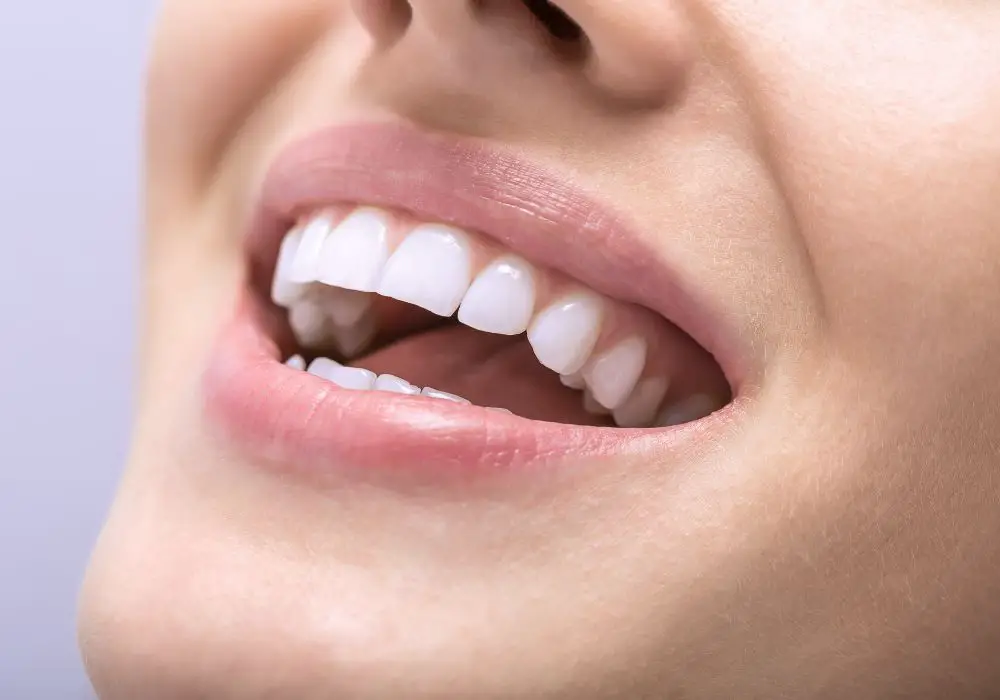
Teeth whitening strips like any form of teeth whitening, may cause your teeth to become sensitive. Using sensitive toothpaste may help to alleviate the discomfort. If you are prone to sensitive teeth following whitening treatments, start using sensitive toothpaste a few weeks before you use the strips. It may help your teeth to build up resistance.
Some people may also experience burning gums following whitening treatments. This is more likely with at-home treatments when the whitening agents may come into contact with your gums. Custom-made dental trays provided by your dentist can reduce the risk of irritated or burning gums.
If you have tartar buildup on your teeth, the whitening strips may not work on your teeth but whiten the tartar instead. As a result, you may end up with whiter sections in your teeth in the areas where the tartar buildup is located. Therefore it is essential to remove tartar from your teeth before you have whitening treatment.
Some people might also find that their teeth look more yellow when they have used whitening strips. This is because the strips contain strong whitening agents and over time they can wear the tooth enamel off and expose the dentin layer which is yellow. However, this should not happen if the strips are not overused.
How to Look After Whitened Teeth?
When you have gone through a whitening treatment, you want to maintain the results as long as possible. Establishing a good dental hygiene routine at home will not only help keep your teeth whiter but also be beneficial for your oral health.
Brush your teeth twice a day and floss once a day to prevent the buildup of plaque and tartar. Visit your dentist regularly. For some people this may be once a year, for others, it may be twice a year. During your visits, your dentist can assess the health of your teeth and gums and give them a professional clean.
As well as cleaning your teeth and seeing your dentist, you can help your teeth stay whiter by avoiding foods and drinks that will stain them. Because acidic foods and drinks can eat away the enamel, avoiding them can also keep your teeth looking whiter. It is also advisable to use a straw when drinking beverages that can stain your teeth.
Smoking and other use of tobacco products will also cause your teeth to discolor, so quit using them to keep whiter teeth.
Conclusion
Whitening strips are an easy-to-use at-home teeth whitening system. To get the best results, clean your teeth about half an hour before using the strips. You can brush your teeth afterward, too, but wait around twenty minutes before doing so. To maintain the results, do not smoke cigarettes and avoid foods and drinks that can cause stains.
If you are not sure if whitening strips will work for you, there are other whitening options available to you. Some of these are available over the counter, others will be provided by your dentist. Before using at-home whitening products, consider speaking to your dentist to ensure you are protecting your teeth from potential side effects.

